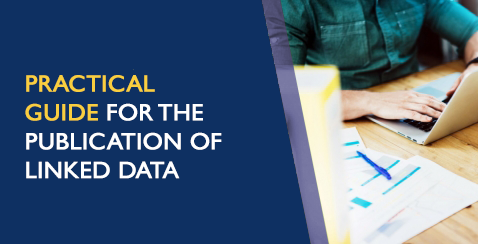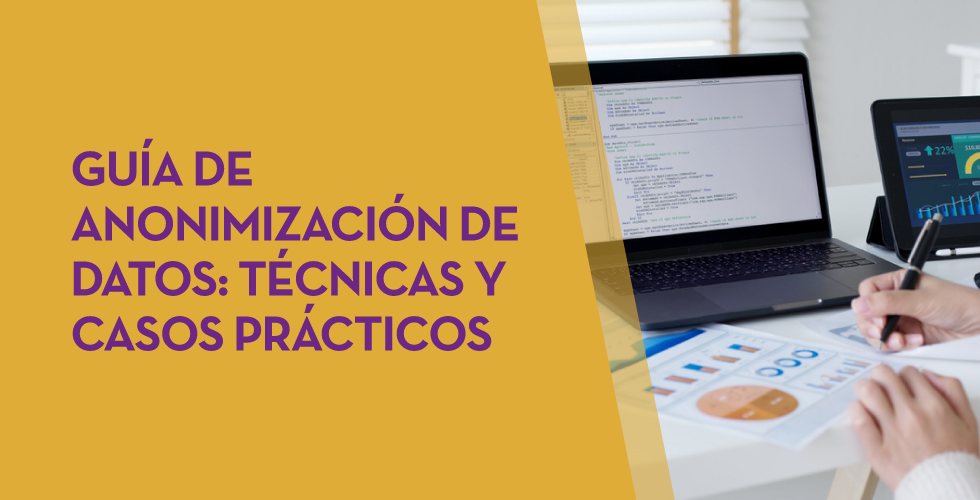Guide to generating synthetic data: an indispensable tool for innovation and data protection
Fecha del documento: 19-05-2025

The Spanish Data Protection Agency has recently published the Spanish translation of the Guide on Synthetic Data Generation, originally produced by the Data Protection Authority of Singapore. This document provides technical and practical guidance for data protection officers, managers and data protection officers on how to implement this technology that allows simulating real data while maintaining their statistical characteristics without compromising personal information.
The guide highlights how synthetic data can drive the data economy, accelerate innovation and mitigate risks in security breaches. To this end, it presents case studies, recommendations and best practices aimed at reducing the risks of re-identification. In this post, we analyse the key aspects of the Guide highlighting main use cases and examples of practical application.
What are synthetic data? Concept and benefits
Synthetic data is artificial data generated using mathematical models specifically designed for artificial intelligence (AI) or machine learning (ML) systems. This data is created by training a model on a source dataset to imitate its characteristics and structure, but without exactly replicating the original records.
High-quality synthetic data retain the statistical properties and patterns of the original data. They therefore allow for analyses that produce results similar to those that would be obtained with real data. However, being artificial, they significantly reduce the risks associated with the exposure of sensitive or personal information.
For more information on this topic, you can read this Monographic report on synthetic data:. What are they and what are they used for? with detailed information on the theoretical foundations, methodologies and practical applications of this technology.
The implementation of synthetic data offers multiple advantages for organisations, for example:
- Privacy protection: allow data analysis while maintaining the confidentiality of personal or commercially sensitive information.
- Regulatory compliance: make it easier to follow data protection regulations while maximising the value of information assets.
- Risk reduction: minimise the chances of data breaches and their consequences.
- Driving innovation: accelerate the development of data-driven solutions without compromising privacy.
- Enhanced collaboration: Enable valuable information to be shared securely across organisations and departments.
Steps to generate synthetic data
To properly implement this technology, the Guide on Synthetic Data Generation recommends following a structured five-step approach:
- Know the data: cClearly understand the purpose of the synthetic data and the characteristics of the source data to be preserved, setting precise targets for the threshold of acceptable risk and expected utility.
- Prepare the data: iidentify key insights to be retained, select relevant attributes, remove or pseudonymise direct identifiers, and standardise formats and structures in a well-documented data dictionary .
- Generate synthetic data: sselect the most appropriate methods according to the use case, assess quality through completeness, fidelity and usability checks, and iteratively adjust the process to achieve the desired balance.
- Assess re-identification risks: aApply attack-based techniques to determine the possibility of inferring information about individuals or their membership of the original set, ensuring that risk levels are acceptable.
- Manage residual risks: iImplement technical, governance and contractual controls to mitigate identified risks, properly documenting the entire process.
Practical applications and success stories
To realise all these benefits, synthetic data can be applied in a variety of scenarios that respond to specific organisational needs. The Guide mentions, for example:
1 Generation of datasets for training AI/ML models: lSynthetic data solves the problem of the scarcity of labelled (i.e. usable) data for training AI models. Where real data are limited, synthetic data can be a cost-effective alternative. In addition, they allow to simulate extraordinary events or to increase the representation of minority groups in training sets. An interesting application to improve the performance and representativeness of all social groups in AI models.
2 Data analysis and collaboration: eThis type of data facilitates the exchange of information for analysis, especially in sectors such as health, where the original data is particularly sensitive. In this sector as in others, they provide stakeholders with a representative sample of actual data without exposing confidential information, allowing them to assess the quality and potential of the data before formal agreements are made.
3 Software testing: sis very useful for system development and software testing because it allows the use of realistic, but not real data in development environments, thus avoiding possible personal data breaches in case of compromise of the development environment..
The practical application of synthetic data is already showing positive results in various sectors:
I. Financial sector: fraud detection. J.P. Morgan has successfully used synthetic data to train fraud detection models, creating datasets with a higher percentage of fraudulent cases that significantly improved the models' ability to identify anomalous behaviour.
II. Technology sector: research on AI bias. Mastercard collaborated with researchers to develop methods to test for bias in AI using synthetic data that maintained the true relationships of the original data, but were private enough to be shared with outside researchers, enabling advances that would not have been possible without this technology.
III. Health sector: safeguarding patient data. Johnson & Johnson implemented AI-generated synthetic data as an alternative to traditional anonymisation techniques to process healthcare data, achieving a significant improvement in the quality of analysis by effectively representing the target population while protecting patients' privacy.
The balance between utility and protection
It is important to note that synthetic data are not inherently risk-free. The similarity to the original data could, in certain circumstances, allow information about individuals or sensitive data to be leaked. It is therefore crucial to strike a balance between data utility and data protection.
This balance can be achieved by implementing good practices during the process of generating synthetic data, incorporating protective measures such as:
- Adequate data preparation: removal of outliers, pseudonymisation of direct identifiers and generalisation of granular data.
- Re-identification risk assessment: analysis of the possibility that synthetic data can be linked to real individuals.
- Implementation of technical controls: adding noise to data, reducing granularity or applying differential privacy techniques.
Synthetic data represents a exceptional opportunity to drive data-driven innovation while respecting privacy and complying with data protection regulations. Their ability to generate statistically representative but artificial information makes them a versatile tool for multiple applications, from AI model training to inter-organisational collaboration and software development.
By properly implementing the best practices and controls described in Guide on synthetic data generation translated by the AEPD, organisations can reap the benefits of synthetic data while minimising the associated risks, positioning themselves at the forefront of responsible digital transformation. The adoption of privacy-enhancing technologies such as synthetic data is not only a defensive measure, but a proactive step towards an organisational culture that values both innovation and data protection, which are critical to success in the digital economy of the future.














